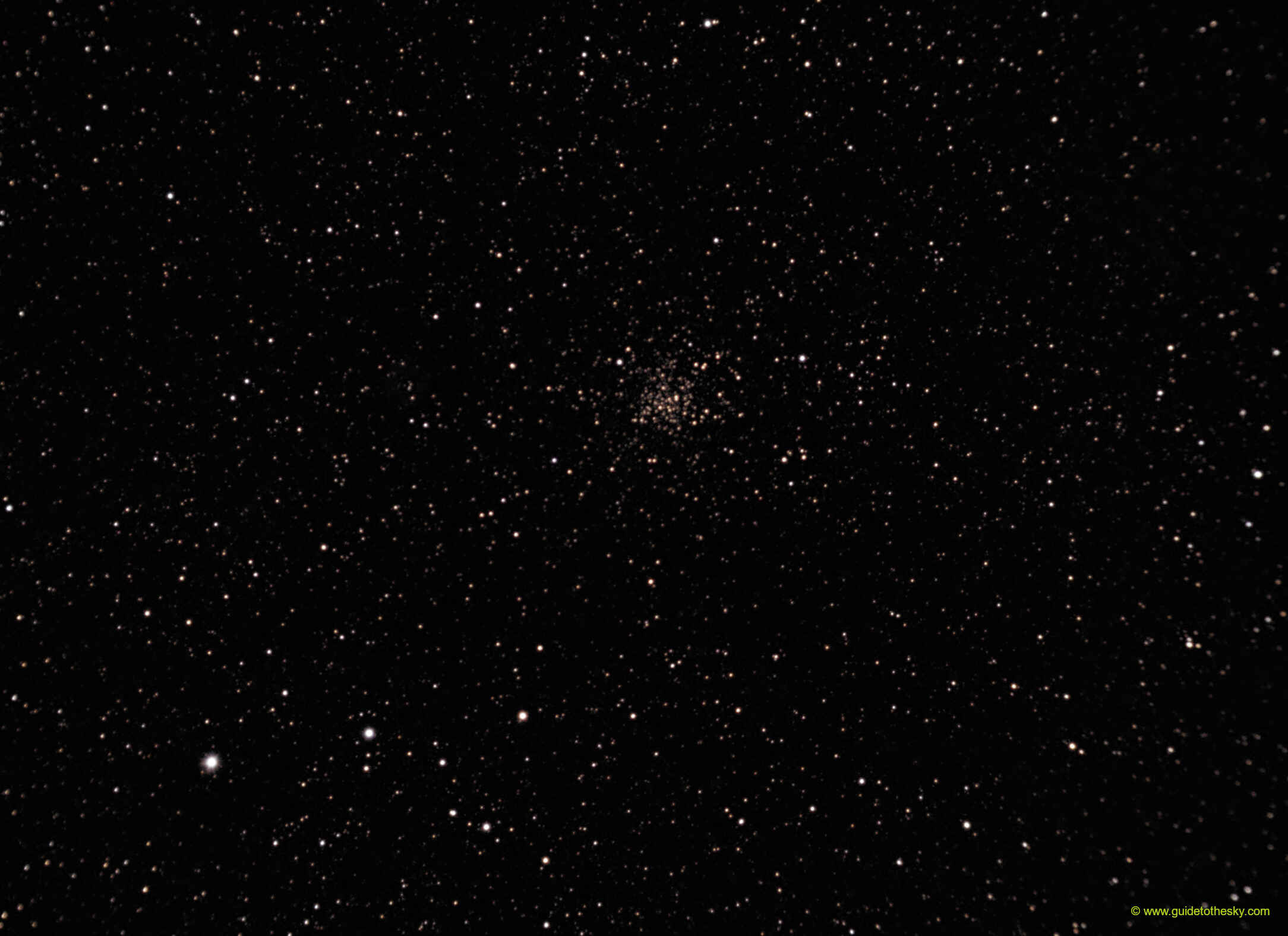Messier 71 - Sagitta

M 71 es un pequeño cúmulo globular en la constelación de la Flecha o Sagitta.
En un princpio puede parecer que M 71 está muy lejos, pero no es el caso, dista {{ object[0].M71.mesDistances[0].dist }} {{ object[0].M71.mesDistances[0].unit }}, es decir, unos 13,000 años luz, lo que no es demasiado para un objeto de su clase, si lo comparamos por ejemplo con M 3, que dista de nosotros unos 33,000 años luz.
M 71 tiene una magnitud similar a la 6ª y su característica más importante es que es posible resolver casi por completo, incluso sus estrellas centrales, hay aún quien discute su naturaleza globular y piensa que en realidad, realidad M 71 es un cúmulo abierto muy denso pues algunas piezas no encajan: su baja densidad, su relativamente alta metalicidad y su edad: M 71 no es tan antiguo como otros cúmulos globulares.
En un princpio puede parecer que M 71 está muy lejos, pero no es el caso, dista {{ object[0].M71.mesDistances[0].dist }} {{ object[0].M71.mesDistances[0].unit }}, es decir, unos 13,000 años luz, lo que no es demasiado para un objeto de su clase, si lo comparamos por ejemplo con M 3, que dista de nosotros unos 33,000 años luz.
M 71 tiene una magnitud similar a la 6ª y su característica más importante es que es posible resolver casi por completo, incluso sus estrellas centrales, hay aún quien discute su naturaleza globular y piensa que en realidad, realidad M 71 es un cúmulo abierto muy denso pues algunas piezas no encajan: su baja densidad, su relativamente alta metalicidad y su edad: M 71 no es tan antiguo como otros cúmulos globulares.
M71 - - en la IA
Messier 71 (M71), also known as NGC 6838, is a globular cluster in the constellation Sagitta. Here's a summary of its key features and information:
Key Features:
- Type: Globular Cluster
- Constellation: Sagitta
- Distance: Approximately 13,000 light-years from Earth
- Apparent Magnitude: 6.1 (fairly bright, visible with binoculars under good conditions)
- Diameter: About 27 light-years
- Age: M71 is considered a relatively young and metal-rich globular cluster. Its age is estimated to be around 9-10 billion years, which is young compared to many other globulars.
- Unusual Characteristics: M71 has some properties that made it difficult to classify initially. It's relatively loose and not as densely packed as many other globular clusters. This led to it being sometimes mistaken for a dense open cluster.
- Metallicity: Relatively metal-rich for a globular cluster. "Metallicity" in astronomy refers to the abundance of elements heavier than hydrogen and helium. Globular clusters are usually metal-poor.
Observational Information:
- How to Find It: M71 is located near the bright star Gamma Sagittae in the small constellation Sagitta. It's best observed with binoculars or a small telescope.
- What to See: Through binoculars, M71 appears as a fuzzy, unresolved patch of light. A small telescope will begin to resolve some of the brighter stars on the outskirts of the cluster. Larger telescopes will reveal more individual stars and a granular appearance.
Significance:
- Classification Challenges: M71's intermediate properties between open and globular clusters have made it an interesting object for astronomers studying stellar populations and cluster evolution. It has helped refine our understanding of how these types of clusters form and change over time.
- Metal-Rich Nature: Its relatively high metallicity for a globular cluster is a puzzle, suggesting a different formation history or environment compared to typical globulars.
In short, Messier 71 is a fascinating globular cluster that provides valuable insights into the diversity and evolution of stellar systems in our galaxy. Its unique characteristics have challenged our understanding of cluster classification and formation.
Más información sobre Messier 71 en NASA/IPAC.
Mapa alrededor de Messier 71
Otros identificadores de M71:
"C 1951+186" ,"CSI+18-19515" ,"GCRV 12241" ,"GCl 115" ,"M 71" ,"NGC 6838" ,"[KPS2012] MWSC 3200",

